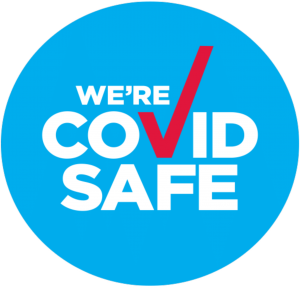Solutions for Knee Pain and Injuries
Physiotherapy and clinical exercise programs are available for knee pain and injuries to decrease pain, progress towards optimum function and prevent recurrence of the problem.
Treatments Available Include:
- Stretching, Strengthening & Stabilizing Exercises
- Neuromuscular control exercises for injury rehabilitation / injury prevention
- Pre and Post-Operative Care
This approach is beneficial for conditions such as:
- ACL Rehabilitation
- Anterior Knee Pain
- Bursitis
- Ligament Injuries
- Meniscus Injuries & Cartilage Tears
- Osteoarthritis
- Patellar Instability
- Patellar Tendinopathy
- Patellofemoral Pain
- Post-Operative Rehabilitation
- Running Injuries
Anterior Knee Pain / Patellofemoral Pain Syndrome / Runner’s Knee
Anterior knee pain is one of the most common non-traumatic conditions affecting the knee.
Pain is felt in or around the kneecap (patella). It is usually insidious in its origin unrelated to any specific injury affecting both males and females regardless of age.
Anterior knee pain may be a limiting factor for our simple daily activities such as walking, prolonged sitting, walking up and down stairs, squatting and running.
There are many potential causes of anterior knee pain, which may include the fat pad, retinaculum, ligamentous structures, abnormal bone loading the most prevalent being patellofemoral pain syndrome (PFP), often called “runner’s knee”.
Causes of patellofemoral pain are often multifactorial in origin with interplay of social, neural and numerous anatomical, biomechanical, physiological, intrinsic and extrinsic factors at play.
Common Symptoms of Patellofemoral Pain
- Anterior knee pain while running
- Knee flexion or squatting
- Pain with prolonged sitting
- Walking up or down stairs
- Sudden weakness or giving way
- Crepitus or grinding of the patella
- Painful around the patella borders
- Mild swelling
A Multimodal Approach in Managing PFP
PFP treatment is based on assessment outcomes, allowing for a tailored treatment protocol specific for each individual.
- Education understanding exacerbating factors
- Pain management
- Shoe inserts if required
- Motor control
- Gait analysis/retraining
- Proprioception and balance
- Exercises targeting weak muscles
Strengthening and Retraining Program
Positive outcomes may be gained by integrating the distal lower limb and the more proximal pelvis of the kinetic chain in a strengthening and endurance program, as the patella floats in the middle may be influenced by either of these sites.
Quadriceps
Individuals with PFP appear to have weaker quadriceps.A strong quadriceps plays an important role not only in torque production, but also maintaining the congruence within the patellofemoral joint (PFJ).
Pelvis
Training the hip extensors and abductorsis essential as these stabilize the lateral pelvis in case of contralateral hip drop. The external rotatorscontrol internal rotation of the hip and knee.
Trunk Control
The abdominals and muscles of the back are essential for controlling ground reaction forces through the kinetic chain and body lean during activity.
Foot and Lower Limbs
Foot position and control are imperative during both static and dynamic loading.
Dysfunctions due to fatigue, poor foot control, excessive pronation or lack of mobility may be associated with PFP.
Osteoarthritis of the Knee: A Multimodal Rehabilitation and Treatment Approach
Osteoarthritis (OA) also called Degenerative joint disease (DJD) is the most common form of arthritis affecting the bone, cartilage and soft tissues within an articular joint.
OA can be a painful condition leading to a loss of independence, functional impairment and inability to partake in daily activities such as walking stair climbing and other physical or sporting activities.
Although OA is more common in the aging population, it is also found in younger sporting populations, affecting them later in life after knee trauma, such as Anterior Cruciate Ligament ACL) reconstruction and returning to high level of competitive sport.
Common Symptoms
- Stiffness after prolonged sitting
- Stiffness early in the morning
- Grating or clicking sound on movement
- Reduced strength and mobility
- Mild swelling after activity
Exercise Benefits
Loss of strength and muscle mass is considered to be an important risk factor in OA and associated with disease progression.
A systemic Cochrane review of the literature found that exercise can reduce pain, improve function and quality of life.
A Multimodal Approach in Managing Knee OA
There are a variety of strategies that can help the patient with knee OA, including psychological and pharmacological approaches.
Research demonstrates compelling evidence regarding the benefits of a tailored exercise program on the management and treatment knee OA.
Pain often limits exercise adherence in the patient with knee OA using traditional high intensity exercise. The clinical and therapeutic potential of BFRT having the ability to increase strength and muscle mass without increasing loads on the articular joint is an encouraging option.



